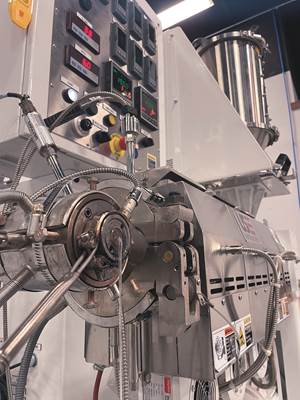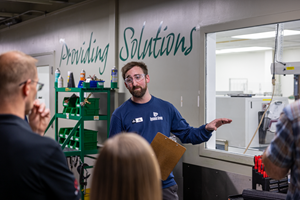Wood on Plastics: Demand for Medical Products Continues to Expand
The healthcare industry has received a lot of attention recently.
The healthcare industry has received a lot of attention recently. Aging baby-boomers, skyrocketing costs of health insurance, and the rancorous debate over the federal government’s enormous healthcare reform legislation have dominated the national headlines over the past few months. It is reasonable to assume that all of these issues will impact plastics processors for years to come. But my guess is that these are not the main reasons that virtually all segments of the plastics industry are increasingly interested in the healthcare market.
I suspect the main reason that the manufacturing sector is paying so much attention to healthcare is money. Even in the midst of the recent economic recession, the medical products segment was expanding and profitable. Yes, that’s right. While suppliers to the motor vehicle, construction, appliance, consumer products, packaging, and even electronics sectors were struggling to survive, the guys making medical supplies and equipment were getting bigger and busier. And there is a strong indication that this trend of the medical industry outperforming the overall average will continue.
There are two ways we can measure and forecast the trends in medical products. The first is to look at consumer spending patterns for these products. According to data from the Commerce Department’s Bureau of Economic Analysis, consumer spending for therapeutic medical equipment expanded by an inflation-adjusted average annual rate of more than 5% during the past five years, and it even showed a small increase in 2009. Spending for other non-pharmaceutical medical products also grew by 5%/yr during this period, including a rise last year.
By comparison, spending for all other types of goods consumed in the U.S. grew by just over 1%/yr during this time frame, and 2009 consumer spending for non-medical goods declined by 2%. So in both good economic times and bad, American consumers are steadily allocating more of their resources to medical products.
This trend of increased consumer spending is spurring growth in the output of medical products from U.S. factories. The total volume of medical supplies and equipment produced in the U.S. expanded by 3% in 2009 when compared with the previous year. This is a sharp contrast to the 10% decline in total factory output for all other industrial products. In the first quarter of 2010, the output of medical products was up 5% compared with a year ago, and our current forecast calls for this rate of growth to continue all year.
So we are clearly in the midst of a boom in medical products, which should continue for the foreseeable future, fueled by a combination of favorable demographics and a flurry of technological innovation in the U.S. and Europe. Emerging markets in Asia and Latin America will also generate increased demand due to the combination of new technologies, better access to existing medical products, and the increased use of the packaging needed to ship and store these products in uncertain and far-flung environments.
WHAT IT MEANS TO YOU
Demand for medical products has been driven historically by the desire to save lives. This will continue to be a major factor, but it will become increasingly necessary for designers and suppliers of medical products to also save money. Plastics have many advantages here.
Manufacturers of medical supplies and equipment must develop a close relationship with all the links in their supply chain. Just one global recall or class-action lawsuit could bankrupt most small to medium sized processors, so you better know exactly what you are producing and shipping.
Disposal issues, recycling, and other facets of the “green” or sustainable movement will increasingly affect medical products, so processors should stay informed about the associated costs.
Related Content
Catheter Specialist Finds Sweet Spot Serving Small, Medium-Sized Concerns
Medical-component specialist LightningCath has carved a niche meeting the needs of small to medium-sized entrepreneurs with complex catheter designs … quickly.
Read MoreWhat to Look for in High-Speed Automation for Pipette Production
Automation is a must-have for molders of pipettes. Make sure your supplier provides assurances of throughput and output, manpower utilization, floor space consumption and payback period.
Read MoreNavigating Medical Plastics Trends in 2025
The past few years have tested the resilience of the health care supply chain, especially when it comes to medical plastics.
Read MoreMedical Molder, Moldmaker Embraces Continuous Improvement
True to the adjective in its name, Dynamic Group has been characterized by constant change, activity and progress over its nearly five decades as a medical molder and moldmaker.
Read MoreRead Next
Making the Circular Economy a Reality
Driven by brand owner demands and new worldwide legislation, the entire supply chain is working toward the shift to circularity, with some evidence the circular economy has already begun.
Read MoreFor PLASTICS' CEO Seaholm, NPE to Shine Light on Sustainability Successes
With advocacy, communication and sustainability as three main pillars, Seaholm leads a trade association to NPE that ‘is more active today than we have ever been.’
Read MoreBeyond Prototypes: 8 Ways the Plastics Industry Is Using 3D Printing
Plastics processors are finding applications for 3D printing around the plant and across the supply chain. Here are 8 examples to look for at NPE2024.
Read More









